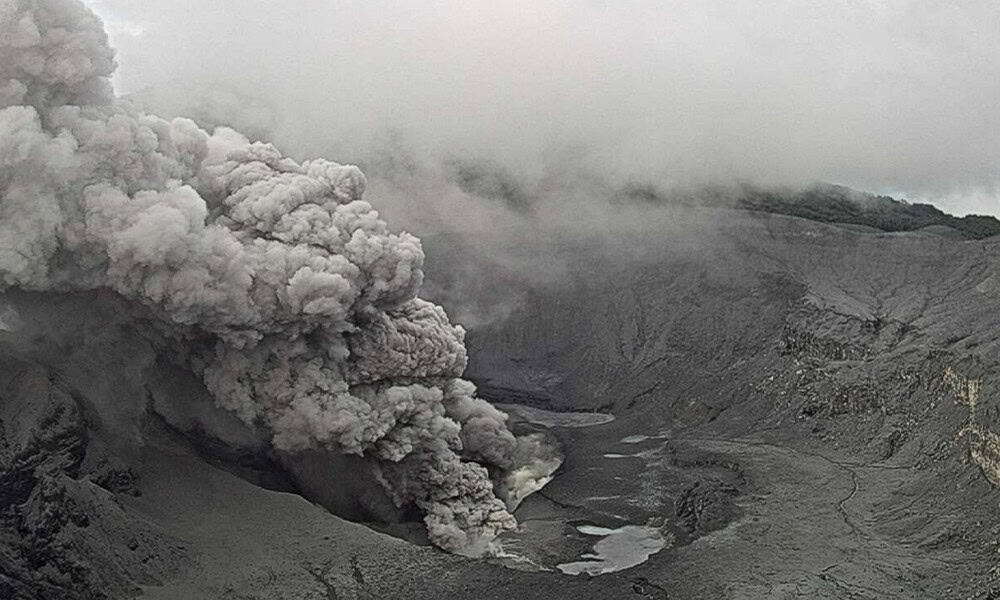Volcán Poás erupted with significant force today, sending an ash and gas plume soaring over 2,000 meters above its crater, marking the most intense eruption of the year, according to the Observatorio Vulcanológico y Sismológico de Costa Rica (OVSICORI). The explosive event, described as a “fuerte erupción explosiva,” blanketed communities across Costa Rica’s Central Valley, prompting urgent health and safety measures.
OVSICORI’s monitoring, detailed on ovsicori.una.ac.cr, recorded the plume reaching 4,708 meters above sea level. Ashfall affected Zarcero, Grecia, Alajuela, Heredia, and San José, with winds carrying particles southwest. The 10-minute eruption expelled ash, toxic gases, and incandescent materials, accompanied by heightened seismic activity and sulfur dioxide emissions exceeding 600 tons per day, signaling potential for further eruptions. OVSICORI volcanologist Geoffroy Avard warned of the volcano’s unpredictable behavior, driven by its acidic crater lake, Laguna Caliente.
Local reports and social media posts on X highlighted the eruption’s visibility, with residents sharing images of ash-covered homes, cars, and streets. OVSICORI urged the public to rely on official updates to counter misinformation spreading online, emphasizing the need for accurate information during such events.
The Comisión Nacional de Emergencias (CNE) maintained an orange alert for the national park, closed since March 28 due to prior volcanic activity, and issued a green alert for surrounding cantons. Authorities advised residents to wear N95 masks and limit outdoor exposure to protect against ash and toxic gas inhalation. The Ministerio de Ambiente y Energía (MINAE) reiterated warnings against illegal visits to restricted areas near the crater, citing dangers from unstable terrain and high gas concentrations.
The U.S. Embassy in San José recommended avoiding the Poás area until conditions stabilize. As OVSICORI continues daily monitoring, residents are urged to stay vigilant and follow official guidance to ensure safety amid ongoing volcanic activity.






